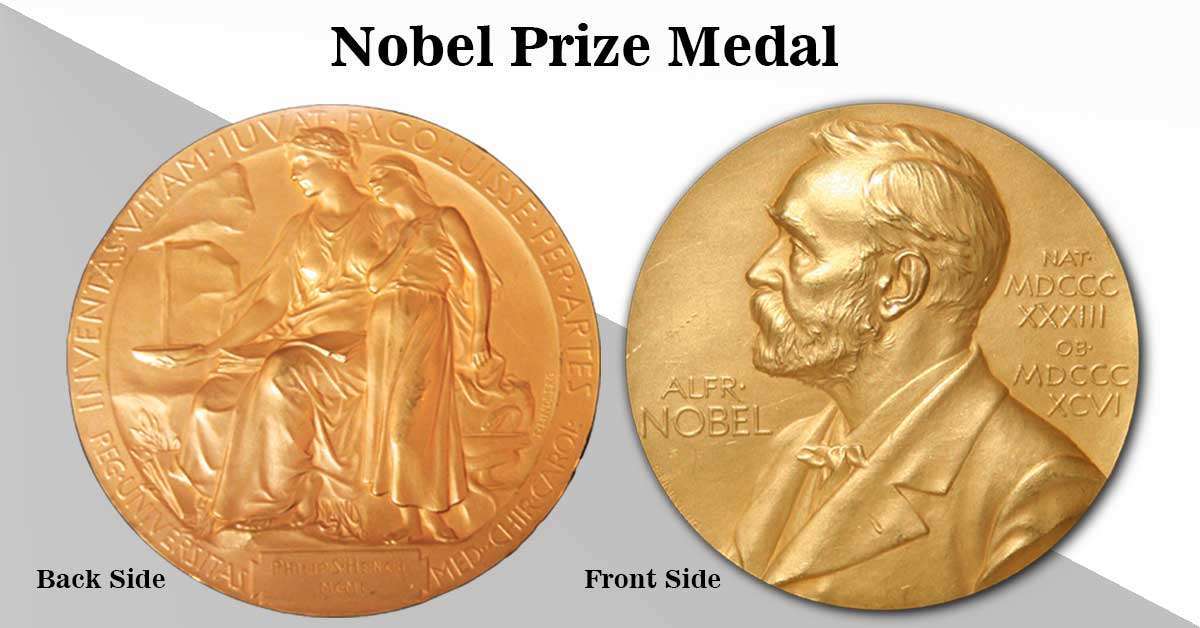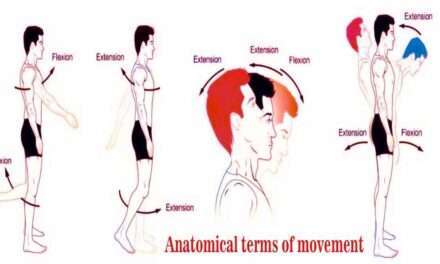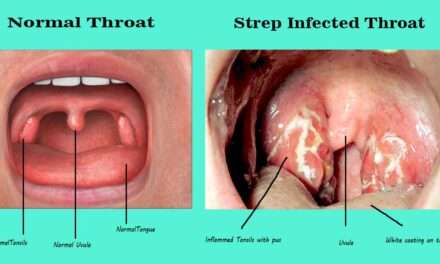Do you interested in the great Physiologists man and woman who won the Nobel Prize? We will provide information about the big names in Physiology or medicine heroes who won the Nobel Prize in Physiology or Medicine. From 1901 through 2022, 989 individuals and organizations received Nobel Prizes and the Sveriges Riksbank Award in Economic Sciences in Commemoration of Alfred Nobel. There were 615 total presentations of these honors. Based on the legacy of Swedish inventor and industrialist Alfred Nobel, the Nobel Prize is a prestigious international award.
Otto Heinrich Warburg
Otto Heinrich Warburg, a medical practitioner, and German physiologist were awarded the Nobel Prize in Medicine in 1931. He was born on October 8, 1883, in Freiburg im Breisgau, Germany. In our cells, nutrients are metabolized to generate energy for cellular construction. This respiration requires enzymes, which facilitate the process but are not metabolized. Otto Warburg studied the breathing habits of growing organisms such as sea urchins. By monitoring oxygen consumption in living cells and seeing which enzymes reacted, he discovered that the respiration enzyme he had been looking for was a red ferrous pigment comparable to the blood pigment hemoglobin in 1928.
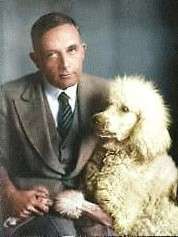
Otto Warburg received the Nobel Prize in Physiology or Medicine in 1931 for establishing the chemical composition of respiratory enzymes. During World War I, he served as an officer in a cavalry unit, and his bravery was recognized with the Iron Cross. Otto Heinrich died on August 1, 1970, sadly.
Theodor Schwann
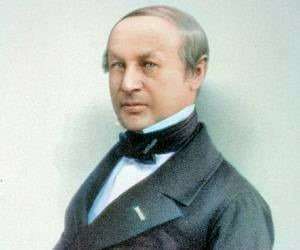
Physician and German Physiologist Theodor Schwann. On December 7, 1810, he entered the world in the German city of Neuss. His contributions to histology and cell theory were seminal in the history of biology. Schwann cells, which he is credited with finding, bear his name. Pepsin and the yeast’s organic origin were both discovered due to his efforts.
The term “metabolism” was coined by Theodor Schwann and has now come to refer to all of the biochemical reactions that result in the transfer of energy within living organisms. As of January 11, 1882, he had passed away
Claude Bernard
Claude Bernard was a renowned physiologist during his time. He was born on January 12, 1813, in Saint-Julien, which is located in France. French physiologist Bernard was responsible for several significant discoveries resulting from his scientific experiments. It is generally agreed that he was the first person to use the term “milieu intérieur,” which describes the environment of extracellular fluid (ECF).
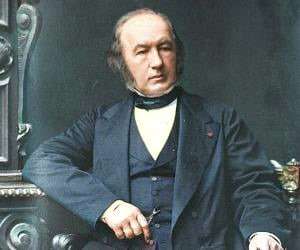
In addition, he was a pioneer in the field of conducting experiments while being blinded in order to remove numerous experimental biases. Died: February 10, 1878.
Albert Szent-Györgyi
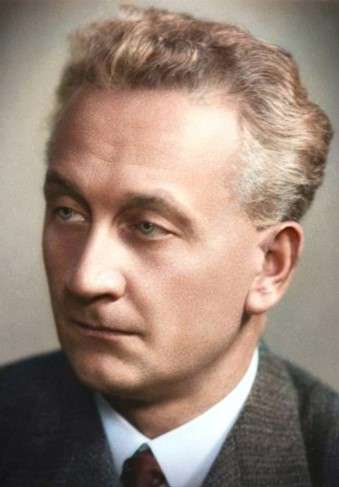
A physiologist and biochemist, Albert Szent-Gyorgyi was born in Budapest, Austria, Hungary, on September 16, 1893. He was a pioneer in the area of both of these disciplines. During World War II, he purposely shot himself in the arm to be discharged and return home, where he pursued a career in medicine. He is well recognized for being the first to isolate vitamin C, but few people realize he was also a talented pianist. Within our cells, the breakdown of nutrients results in the release of energy that can then be used to produce new cells.
Albert Szent-Gyorgyi began his research on metabolic processes at the beginning of the 1930s. He demonstrated how the sequences of these processes are influenced by catalysts, which are chemicals that speed up chemical reactions without being a part of the final result. As a component of the oxidation events that occur during metabolism, growth hormones, such as fumaric acid, play an important function in the movement of fluids. Szent-Gyorgyi also drew attention to the part vitamin C, the substance he had discovered, played in the processes. He passed away on October 22, 1986.
Johann Friedrich Blumenbach
Johann Friedrich Blumenbach was a German physician and naturalist regarded as a primary founder of the comparative scientific disciplines of zoology and anthropology. He did much of his work in Germany. His birthday was May 11th, 1752, and he was born in Gotha, Germany. Johann Friedrich Blumenbach, a forerunner in the field of physical anthropology, developed one of the earliest racial classification systems for humans based on his research of human skulls.
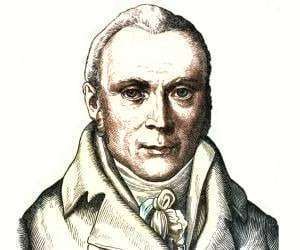
Blumenbach divided all people into five distinct racial categories. He was a child prodigy who came from a family of intellectuals. Even though his theory supported the degenerative hypothesis, he opposed scientific racism. On January 22nd, 1840, he passed away.
Andrew Huxley
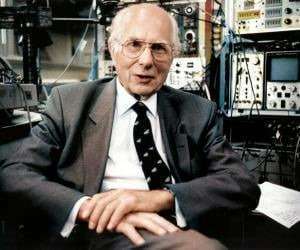
Andrew Huxley, who was British and worked in the fields of physiology and biophysics, was awarded the great Nobel Prize in Physiology/ Medicine in 1963. On November 22nd, 1917, he was born in the neighbourhood of Hampstead in London. Andrew Huxley is well-known for his study on nerves, fibres, and the chemical mechanisms involved in the transmission of nerve impulses. His work has been cited numerous times in scientific publications
The information that is passed along by action potentials is dependent not only on the rate of transmission but also on the connections that each nerve cell maintains with other cells in its immediate vicinity. During the rising phase of the impulse, the membrane undergoes a change that makes it permeable, and this permeability is highly selective for sodium ions. The change in potential causes the pores in the membrane to open, which enables sodium ions to diffuse in and brings the potential very near to being in equilibrium with the sodium ions. The sodium ions are in equilibrium when the potential is at its lowest. During the period of the impulse where it is dropping, potassium ions disperse.
An action potential is a phenomenon that occurs when a nerve cell undergoes a momentary reversal in its electrical polarisation. This phenomenon, which is responsible for the transmission of an impulse along a nerve fibre, was shown to be caused by the exchange of sodium and potassium ions by Huxley’s team. Electrochemistry, modern electronics, and mathematical modelling were utilized to successfully complete this task. After some time, he received the honour of a knighthood for his many achievements. He was the grandson of the eminent biologist T.H. Huxley, who was the father of the author Leonard Huxley. The 30th of May in 2012 was the day he went away.
Emil Adolf von Behring
Emil Adolf von Behring, a prominent German physiologist, was born on March 15, 1854. He entered this world in Lawice. The discovery of antitoxins for diphtheria and tetanus paved the way for the adoption of vaccinations as a method of protection against these infectious diseases. In addition, it cleared the way for the specific injection of immune serum as a treatment for diseases of this kind.
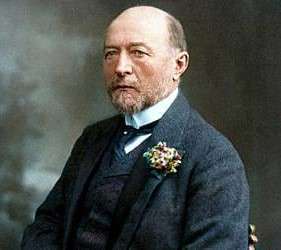
Behring was recognized as an important figure in modern medicine and immunology when he was given the first great Nobel Prize in physiology or medicine in 1901. This honor recognized his role as a pioneer in these fields. He suffered from pneumonia in 1917, and as a result, he died on March 31 in Marburg, Germany.
Charles Scott Sherrington
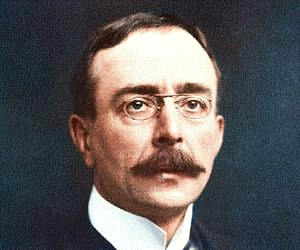
November 27, 1857, Charles Scott Sherrington was born in Islington, London. He was trained in bacteriology, pathology, neurophysiology, and histology and was of English nationality. Sherrington and Edgar Douglas Adrian shared the 1932 Nobel Prize in Physiology or Medicine for their discoveries about the functioning of neurons
Charles Scott Sherrington significantly contributed to our comprehension of the central nervous system when he explained the synaptic transmission between neurons. In addition to this, the illustrious Royal Medal was bestowed upon him. The date of his passing was March 4, 1952.
Jan Evangelista Purkinje
He was born in the Kingdom of Bohemia his Birthdate in December 17, 1787. In 1839, he coined the term protoplasm for the fluid substance of a cell. He discovered the Purkinje effect, the human eye’s much-reduced sensitivity to dim red light compared to dim blue light, and published in 1823 a description of several entoptic phenomena. He created the world’s first Department of Physiology at the University of Breslau in Prussia (now Wrocław, Poland) in 1839 and the world’s second official physiology laboratory in 1842.
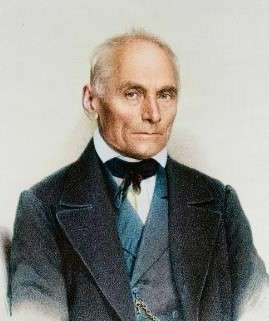
Here he was a founder of the Literary-Slav Society. Purkyně is best known for his 1837 discovery of Purkinje cells, large neurons with many branching dendrites found in the cerebellum. He is also known for his discovery in 1839 of Purkinje fibers, the fibrous tissue that conducts electrical impulses from the atrioventricular node to all parts of the ventricles of the heart. He died in July 28, 1869.
Sir John Eccles
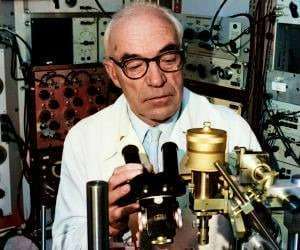
He was born in the Bohemian Kingdom. Date of birth: December 17, 1787 (then part of the Austrian monarchy, now the Czech Republic). In 1839, he came up with the word “protoplasm” to describe the liquid inside a cell. He found that the human eye is much less sensitive to dim red light than to dim blue light. It is called the Purkinje effect.
In 1823, he wrote about several entoptic phenomena. In 1839, he started his first job in the Physiology department at the University of Breslau in Prussia, now called Wrocaw, Poland. In 1842, he opened the second official physiology laboratory in the world. He helped start the Literary-Slav Society there. Purkyn is best known for finding Purkinje cells in the cerebellum in 1837. These are giant nerve cells with many branches called dendrites. He is also known for finding Purkinje fibers in 1839. The fibrous tissue carries electrical impulses from the atrioventricular node to all parts of the heart’s ventricles. On July 28, 1869, he died.
David Julius
David Julius was born in the city of Brooklyn, New York, in the United States of America, on November 4, 1955. He is an American physiologist who was given the prestigious great Nobel Prize in Physiology or Medicine in 2021. David Julius received a lot of notoriety as a result of this achievement. D. Julius is well-known for his study on the molecular mechanisms underlying heat and pain, particularly his characterization of the menthol and temperature-sensitive TRPV1 and TRPM8 receptors.
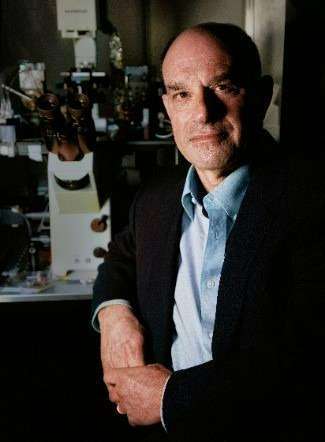
He is currently employed as a professor at the University of California, San Francisco. He received the honor in conjunction with Ardem Patapoutian for their efforts in finding the touch and temperature sensors. David Julius has received numerous honors, including the Shaw Prize, the Gairdner Foundation International Award, and the Prince of Asturias Prize.
Walter Bradford Cannon
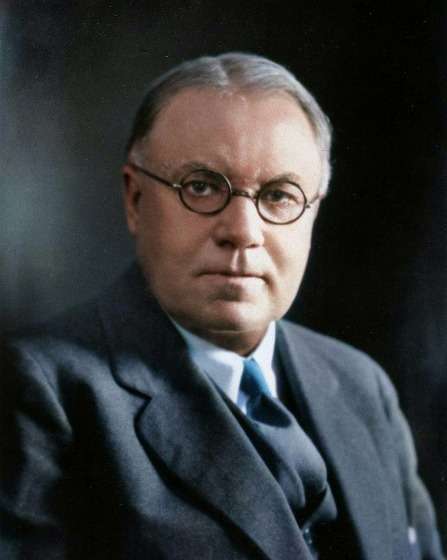
Walter Bradford Cannon was born in Prairie du Chien, in the United States of America, on October 19, 1871. His tenure as chairman of the department and professor at Harvard Medical School was the most well-known component of his career as an American physiologist. In 1998, he passed away. Walter Bradford Cannon is credited with creating the “fight-or-flight” response and the homeostasis theory.
His first book, The Wisdom of the Body, was released in 1932 and served as a platform for popularising his beliefs. He was among the first to blend heavy metal salts with foods to improve contrast in x-ray imaging of the digestive tract. In his investigations, he employed heavy metal salts such as barium sulfate, bismuth subnitrate, and bismuth oxychloride. One newly developed practical application of this research is barium meal. Cannon and physiologist Philip Bard devised the Cannon-Bard hypothesis to explain why people feel their emotions first before acting on them. October 1, 1945, was the date he left.
Brian Kobilka
Brian Kobilka made his debut in the world on May 30, 1955, in the city named Little Falls, Minnesota. He received the great Nobel Prize in Chemistry in 2012, which gave him the most renown as an American physiologist. Hormone-like molecules regulate the communication between individual cells in our bodies. A hormone can be absorbed by a microscopic organelle known as a receptor or receiver. Brian Kobilka discovered the gene that controls the growth of the adrenaline receptor in the 1980s.
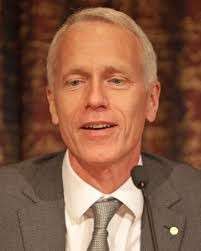
Kobilka’s perseverance made this finding possible. He and Robert Lefkowitz identified another element of the receptor: similar to light-capturing receptors found in the retina. It was later discovered that G-protein-coupled receptors are a diverse family of receptors that share traits in their appearance and behavior. Approximately half of all currently marketed medications are targeted at this specific receptor type. In addition, he is reported to have had a role in forming the biotechnology firm ConfometRx. Brian Kobilka is a Stanford University School of Medicine faculty member and works as a professor there.
Archibald Hill
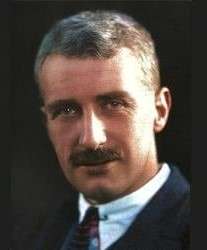
Archibald Hill made his debut in the world on September 26, 1886, in Bristol, England. Archibald Hill was a physiologist and biophysicist who won the Nobel Prize for his research on how muscles create heat. The Cambridge University graduate also worked as a research professor at the Royal Society and held teaching and research roles at the universities of Manchester and University College London.
John Maynard Keynes’ wife was his sister, and he was married to her. Hill is a pioneer in various fields, including biophysics and operations research. He was a great legislator and humanitarian, dedicating his life to furthering our understanding of muscle physiology and making substantial contributions to the discipline. His body of work has had and continues to impact sports medicine significantly. It is still true today. June 3, 1977, was the day he left.
Charles Richet
Charles Richet made his world debut in Paris on August 25, 1850. He was a French physiologist best known for his contributions to the advancement of immunology. In 1913, he was given the great Nobel Prize in Physiology / Medicine for his work on anaphylaxis, which made him well-known in the medical community. Our immune system defends us against diseases and other potentially hazardous compounds.
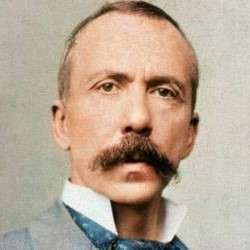
Following an attack, our immune system learns how to better defend us against future assaults, resulting in immunity to future attacks. This is employed in immunizations, for example, when only a trace amount of a potentially pathogenic substance is necessary to provide immunity. In 1902, Charles Richet’s investigation with dogs yielded an unexpected conclusion. If a new dose of a chemical is provided a few weeks after the initial little dose, a significant reaction may develop.
In his explanation, he used the term anaphylaxis. The outcome had far-reaching implications for how we interpret allergy reactions today. His curiosity in the supernatural is strong. Richet, who supported eugenics, was in control of the French Eugenics Society for six years. He died on December 4th, 1935.
John James Rickard Macleod
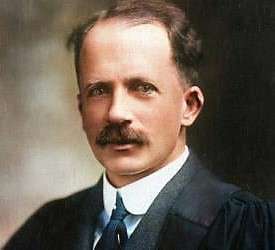
John James Rickard Macleod was born at Clunie, Perthshire, Scotland, on September 6, 1876. He studied physiology and biochemistry and was originally from Scotland. Even though his studies covered a wide range of topics in physiology and biochemistry, he is best remembered for his contributions to understanding carbohydrate metabolism.
In particular, his work with Frederick Banting and Charles Best on the discovery of insulin is what brought him the most recognition. As a result of their contributions to the field of research that led to the discovery of insulin, Frederick Banting and John Macleod were awarded the great Nobel Prize in Physiology / Medicine in 1921. On March 16, 1935, he passed away
Bernardo Houssay
Bernardo Houssay was born on April 10, 1887, in the city of Buenos Aires, Argentina. He was an Argentine scientist best known for receiving the great Nobel Prize in Physiology / Medicine in 1947. As a result of this accomplishment, he became the first Argentine to receive the Nobel Prize in the scientific field. He concluded that the body is required to be able to convert sugar to generate energy.
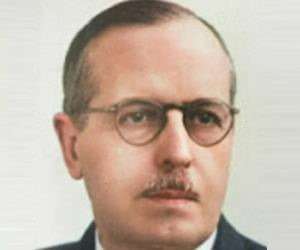
The pancreas’ synthesis of the hormone insulin is critical to completing this process. The pituitary gland, housed within the brain, also exhibits this feature. Bernardo Houssay researched dogs and toads in the early 1940s to investigate the pituitary gland’s role in this setting. The findings of these trials were published. Dogs with surgically removed pituitary gland parts had an unusually high sensitivity to low insulin levels.
It prompted researchers to think that the anterior pituitary gland is in charge of creating a hormone that both regulates and counteracts the effects of insulin. Bernardo Houssay received this honor in appreciation of his discovery of the mechanism through which pituitary hormones regulate glucose levels in animals. He left the world on September 21, 1971.
Charles Brenton Huggins
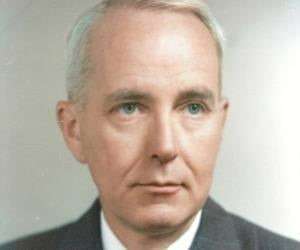
Charles Brenton Huggins was born in September 22, 1901, in the Canadian city of Halifax Regional Municipality. He was a surgeon and urologist who was half-Canadian and half-American. C.B. Huggins is well-known for his groundbreaking studies on the relationship between certain hormones and cancer.
These investigations helped him win the Nobel Prize in Physiology / Medicine, one of the Nobel Prize’s two categories. Cancer is defined by aberrant cell proliferation and multiplication beyond their normal limits. One of the most occurring types of cancer is prostate cancer, which affects a gland that is part of the male sex organ. It is also one of the most easily avoidable types of cancer. Charles Huggins produced evidence in the 1940s demonstrating how hormones can impact the course of an illness.
Castration, which suppresses the manufacturing of male sex hormones, and female sex hormone administration can potentially lessen cancer risk. Hormone therapy for prostate cancer has grown in popularity significantly. Huggins also created a hormone therapy, particularly for treating breast cancer. His research created the groundwork for treating breast and prostate cancer. January 12, 1997, was the day he left.
Ulf von Euler
Ulf von Euler was born in the Swedish city of Stockholm on February 7, 1905. In 1970, he was awarded the great Nobel Prize in Physiology for his contributions to a better understanding neurotransmitters. The human and animal nervous systems contain many cells linked by long nerve fibers. Both humans and animals share this trait because the connections between cells allow neurotransmitters and minute electrical currents to travel across them (synapses).
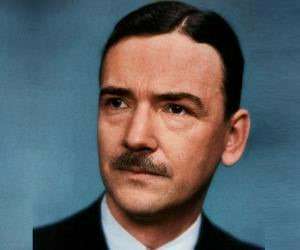
Ulf von Euler was the first to identify the neurotransmitter norepinephrine in 1947. This molecule is required to develop impulses associated with flight or fight. He then demonstrated how synapses connect neurons and are responsible for the transmission of norepinephrine, which is produced and stored in vesicles. He was a full professor of physiology at the Karolinska Institute for over three decades. He worked there for more than three decades. In addition, he received the Gairdner Prize, was appointed an honorary member of the Royal Society, and was among the first to join the World Cultural Council. He passed away on March 9, 1983.
Ragnar Granit
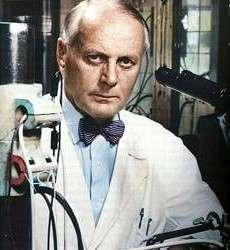
Ragnar Granit was born in October 30, 1900, in the Finnish city of Riihimaki. He shared the 1967 Nobel Prize in Physiology or Medicine with George Wald and Haldan Keffer Hartline for his research on the chemical and physiological factors underlying vision. He was a scientist of Finnish and Swedish heritage, and this is what he is best known for. We can see this because the retinas at the back of our eyes contain many light-sensitive cells responsible for absorbing light from our surroundings.
Following a series of nerve switches, chemical, and electrical impulses are turned into visual perceptions. Ragnar Granit analyzed retinal cells’ electrical impulses using sophisticated electrodes. He discovered that the cells that allow for color vision are called cones and that there were many different types of cones throughout his research between the 1930s and the 1950s. These cones are sensitive to three different wavelengths of light. Ragnar Granit was also a professor at the Karolinska Institute between 1946 and 1967. In March of 1991, he passed away.
André Frédéric Cournand
On September 24, 1895, André Frédéric Cournand was born in Paris. André Frédéric Cournand was his full name. He was a doctor and physiologist of French and American ancestry. His most famous accomplishments include developing the cardiac catheterization procedure and receiving the prestigious Nobel Prize in Physiology or Medicine.
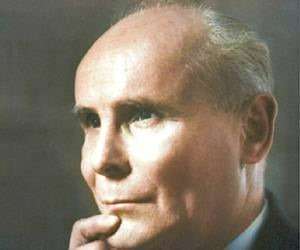
Even though Werner Forssmann successfully inserted a catheter into his own heart in 1929, there was considerable hostility to continuing this type of research after that. Despite this, in 1941, André Cournand and Dickinson Richards published a series of publications that established the use of cardiac catheterization for various objectives. These goals included introducing contrast material for X-ray imaging and measuring pressure and oxygen content.
It was impossible to measure blood pressure or the amount of oxygen in the blood as it traveled from the heart to the lungs before reaching the heart’s upper chambers. However, after this was completed, these measurements were possible. Werner Forssmann, Dickinson W. Richards, and André Frédéric Cournand were honored with this award in 1956. In February 1988, he passed away.
Dickinson W. Richards
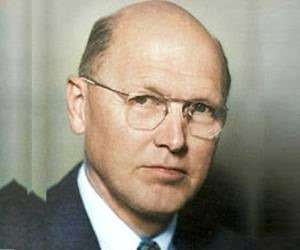
Dickinson W. Richards was born on October 30, 1895, he was born in the United States and earned degrees in both medicine and physiology. His development of cardiac catheterization, for which he received the great Nobel Prize in Physiology / Medicine in 1956, is his most recognized achievement.
Even though Werner Forssmann successfully inserted a catheter into his own heart in 1929, there was considerable hostility to continuing this type of research after that. However, Dickinson Richards and André Cournand produced a number of publications beginning in 1941 that established the use of cardiac catheterization for various objectives. These goals included introducing contrast material for X-ray imaging and measuring pressure and oxygen content.
It was impossible to measure blood pressure or the amount of oxygen in the blood as it traveled from the heart to the lungs before reaching the heart’s upper chambers. However, after this was completed, these measurements were possible. Dickinson W. Richards received numerous other notable awards during his lengthy career, including the Trudeau Medal and the John Phillips Memorial Award, among many others. He left on February 23, 1973.
Roger Guillemin
Roger Guillemin is a well-known neuroscientist of French and American ancestry. He was born in the French city of Dijon on January 11, 1924. His research on neuro-hormones earned him international acclaim and the prestigious Nobel Prize in Medicine in 1977. Hormones are chemical messengers that connect with various body regions to regulate how those parts function.
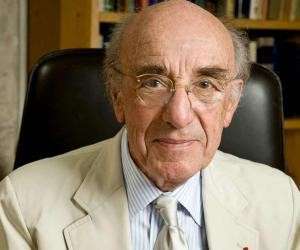
Hormones that induce the release of other hormones are produced in the brain near the pituitary gland. These hormones are then utilized to promote the release of further hormones. At any given time, hormones are only secreted in minimal amounts. Roger Guillemin and Andrew Schally each collected enough releasing hormone from large amounts of pig brains and lamb brains in 1969 to characterize the hormone’s makeup. Later on, they discovered how to make it using chemical processes. Guillemin has received numerous honors throughout his career, including the National Medal of Science, the Albert Lasker Award for Basic Medical Research, and the Passano Award in Medical Sciences.

